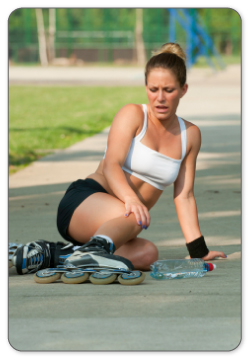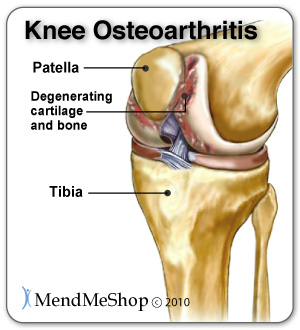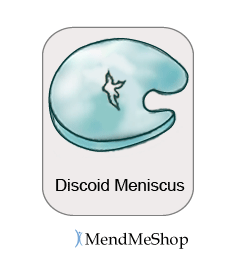|
| Meniscus Tear CausesMeniscus Tear Caused By Acute Trauma Forceful blows to the knee occur most frequently during activities such as rugby, football, baseball, soccer, basketball or racquet sports when you twist your knee, or slow down too quickly. A meniscus injury can occur during a hit if the knee is forcefully rotated while the foot is firmly planted and bearing weight. A meniscus tear can also occur from hyperflexion or hyperextension of your knee (flexion or extension beyond your knee's normal range of motion). A sudden fall on the knee without protection. Hyperflexion or hyperextension can occur during a car accident, while participating in sports or exercising, or during other low-impact activities if the knee is unstable. Regarding the medial meniscus, young athletes are more likely to suffer a medial meniscus tear combined with a medial collateral ligament (MCL) injury. When the medial meniscus tissue is stressed and pulled, a 'bucket-handle' tear might happen. The most common location for injury is to the posterior horn of the medial meniscus, and longitudinal tears are the most common type of tear that happens. Regarding the lateral meniscus, young athletes are more likely to suffer a lateral meniscus tear along with an anterior cruciate ligament (ACL) injury. The center or middle body of the lateral meniscus stretches outward when force is applied because it's anchored at the 2 ends (anterior and posterior) while the middle floats freely in the joint. This is why it's more likely for the lateral meniscus to tear in half and possibly rip so severely that it hangs by one thin fiber. These types of tears generally affect athletes or those under 40 years of age. A medial meniscus tear will frequently occur along with other injuries such as an MCL and/or ACL tear. A combined knee injury is usually seen in contact sports when an athlete gets hit on the outside of a bent knee. A lateral meniscus tear will result more often from a knee that is bent (flexed) excessively and experiences full weight bearing, while the thighbone is turning outward; seen in sports such as skiing. Meniscus Tear Caused By Degeneration of the Meniscus In younger people, the meniscus is very flexible and pliable like a new rubber tire. As we age the meniscal tissue weakens and becomes less flexible, more brittle and develops small cracks much like those seen in an old car tire (fibrocartilage). Once a meniscus is degenerated significantly, the weak meniscus can become injured with only slight trauma, such as getting down into a squat. Sometimes there is no one event that can be blamed for the cause of a meniscus tear due to degeneration. Unfortunately, the blood supply to the menisci decreases by 20% by the age of 40 and the body's ability to heal itself becomes reduced. As a result, it is more difficult to heal a tear caused by deterioration than an acute trauma that occurs earlier in life. Approximately 60% of people over 65 years of age will experience some form of degenerative meniscus tear. (source Medscape.com - web resource for physicians and other health professionals.) Normal wear and tear on the knee tissue can also lead to osteoarthritis. If osteoarthritis sets in, the body releases a chemical substances in the joint cavity which further breakdown and weaken soft tissue, including the meniscus. Meniscus Tear Caused By A Discoid MeniscusA discoid meniscus is known as an abnormally shaped meniscus in the knee. The misshapen meniscus occurs during formation - in the fetal stage of growth. If you have a discoid meniscus, you will find that the menisci are flat and disc shaped rather than crescent shaped wedges. Due to its shape, a discoid meniscus is at a greater risk of tearing than a regular shaped meniscus. There are three types of discoid menisci:
A discoid meniscus generally occurs in the lateral meniscus (1.5-3% of the general population) but can appear in the medial meniscus (0.1-0.3%). There is a greater frequency of discoid menisci reported in people of Asiatic descent with approximately 17% lateral discoid menisci reported. A discoid meniscus is generally found in children less than 11 years of age but the meniscus will often change to a c-shape with maturity, so children will usually grow out of their symptoms. If there is a tear present in a discoid meniscus, one or more of the following symptoms may be experienced:
A discoid meniscus has also been referred to as "snapping knee syndrome". Some people may go through their entire lives with a misshapen meniscus and ever experience any problems. Should You Seek Medical Attention? It is recommended that you see a physician with any continued discomfort and/or pain in your knee or if you experience any of the symptoms below:
Click HERE to Go To Our Online Store We take all major credit cards and Paypal. Product Advisors are available 9:00 am to 5:00 pm Eastern Standard Time Monday to Friday. Learn More About Meniscus Injuries & TreatmentsI want to learn more about Post-Surgery Recovery I want to learn all about Types, Patterns, Shapes & Severity of Meniscus Tears I want to learn more about TShellz Wrap® Circulatory Boost I want to learn more about Ice & Heat: Which Is Better For Treatment? I want to learn more about Meniscus Treatments I want to learn more about different types of Meniscus Surgery
|
        |







